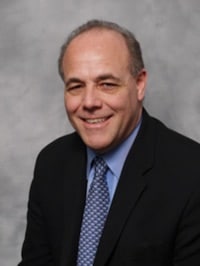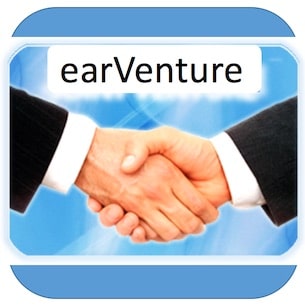
Interview with Delain Wright of IntriCon – Part I

Delain Wright – IntriCon
During the past few weeks, much focus and discussion has been on the business venture between IntriCon Inc. and the ADA (Academy of Doctors of Audiology), called earVenture. Dr. Wayne Staab of HHTM (Hearing Health and Technology Matters) contacted Delain Wright, Vice President of Business Development for IntriCon to obtain first-hand information. Today’s post is Part I of a two-part series of this interview.
HHTM: Delain, can you provide our readers a little about your background in the hearing aid industry?
Delain: I have more than 30 years of executive management and business development experience in the hearing health industry. Prior to joining IntriCon as a consultant in July 2013, I served as Director of Hearing Healthcare for Panasonic Corporation for four years. Before that I served as President and CEO of America Hears, a revolutionary online concept for hearing care. I also served as Vice President of Networks and Distribution for Siemens Hearing Instruments, responsible for business development and key account management. Prior to that, I held senior management positions with A&M Hearing (a Siemens UK Company), and President of Rexton Hearing Inc. (a Siemens Company). I got my first start in the dispensing business stuffing envelopes with promotional information for my parents’ hearing aid business in Fort Wayne, IN, later received my dispensing license, and worked on from there.
HHTM: What led you to IntriCon?
Delain: I had helped launch Panasonic hearing aids in the U.S. and Europe in about 2009. When Panasonic decided not to pursue the HA business in 2013, I had been communicating with IntriCon to find a way to place Panasonic hearing aids into IntriCon products, because Panasonic was struggling to produce products at an appropriate cost, being sensitive to the needs of the market. When Panasonic decided to leave the market, I continued my communications with the IntriCon management on how to provide value to IntriCon products, joined them, and have been here for the past 3 years.
HHTM: The Big News is IntriCon and ADA, their new venture called earVenture. How did this come about?
Delain: I have had long-standing relationships with many organizations, and especially with the ADA through attending their conferences. I always thought ADA was a forward-thinking organization and not afraid to embrace change and identify what is in the best interest of the professional and of the consumer. The original contact was somewhat unusual because it occurred at an HIA (Hearing Industries Association) meeting, at which both I and ADA President-elect, Dr. Kim Cavitt were attending. I had known Dr. Cavitt for many years as a customer when I was with Rexton. She had a vision for serving the consumer in a different way, and was talking about how to bring on PSAPs (Personal Sound Amplification Products), and I asked her if she really wanted to bring on PSAPs. I suggested what was needed was a hearing aid that fits the price mark consumers can afford because they don’t walk in asking for a PSAP, but say they have a small problem and want a solution that fits “a small problem” price point. And, sometimes, as an industry, we fail to meet the consumer at different levels. So, over the course of some discussions between the management of IntriCon and the Executive Board of ADA, earVenture was formed
HHTM: So, the venture was essentially a response to expected changes in the hearing aid industry?
Delain: Yes. The venture was the result of two forward-thinking organizations to acknowledge that the industry was changing – whether we wanted it to change or not. It is changing, and you’re going to be a part of it or you will be left behind. This is where ADA and IntriCon shared a vision on how to meet the unmet need.
HHTM: What was the product line envisioned?
Delain: There was no desire to offer a broad range of products. The products were designed to meet the requirements of ADA; with the target they were after – a price point for the independent professionals to meet that they were not being offered by the major manufacturers. The designed products were not intended to cover the entire hearing aid range, but in moving forward, it is logical to expect some expansion of the product line. However, we were committed to meeting the initial goal – how do we meet the goals of ADA members that were not currently being met?
HHTM: How was the product price point determined? By ADA, you, both, or based on what was possible?
Delain: It was a combination. IntriCon had the capacity and ability to produce at a price competitive with any of the Big Six through our Asian facility. There was no pressure to require a high-end price point at the wholesale level because IntriCon does not have, and does not plan on financing an extensive sales force to train and motivate dispensers. The motivation will be provided by ADA members who are able to purchase products at a price that is in competition with the best that the Big Six offer to their large volume customers. Additionally, for IntriCon, this lower purchase price point does not have the effect of cannibalizing/antagonizing an existing customer base, because IntriCon had none. This latter issue was seen recently with Phonak, and also with some of the Big Six when they decided to sell to Costco at a volume price that independents could not reach.
This is an area where independent audiologists are struggling to compete. Our intent was not to offer a product that shows how it could fit into an insurance model, unbundling model, or big box buster, but one that competes and provides an acceptable profit margin at the same time – something that fits their dispensing practices. Some practices struggle because they cannot purchase at wholesale as cheaply as can a customer purchasing the same product in a big box store. Our collective goal was to offer a quality product that allows independent audiologists to compete in the marketplace. In fact, I just saw an ad the other day from an audiologist saying that “I can compete with Costco with an earVenture product.”
HHTM: Will this result in IntriCon needing an expanded field operation to service the product and audiologists?
Delain: I don’t see IntriCon repeating the current distribution model. We see, perhaps, other manufacturers changing their models to ours – streamlined for the professional. The professional needs an efficient product that focuses on the needs of the patient, along with providing value. They don’t need a person to come in and show them how to run the software to program a hearing aid. These are people who can pick this process up and run with it without all the hand-holding that currently exists.
HHTM: How has ADA been able to convey this change in “hand-holding” to its members?
Delain: ADA has been very outspoken with its membership, telling them that this is in the best interest of the membership, the patient, and you need to embrace the new ways of doing business, but still do it professionally.
HHTM: What is the difference between earVenture products and others currently being manufactured and sold by IntriCon, for example, HiHealth?
Delain: earVenture products are different in both design and goals. earVenture is designed to add value to the product through its professional distribution, not just because it has the newest and latest features (often, features the average person will not use). Still, we wanted to look at “benefit” to the patient with the product by providing features that a quality product needs: adaptive feedback cancellation, best directional, multiple bands of adjustment, etc.
HHTM: Describe the product.
 Delain: There are actually two products: the reVel, and the faVor. Both hearing aids are thin tube (not RIC) instruments. The reVel is intended to cover most hearing losses. It uses a 312 cell. The faVor is a lower gain, smaller size instrument powered by a 10A cell. It provides the basic features expected in competitive thin tube products. The decision to go with thin tubes rather than RIC-style aids was that we found comparable performance when the features we provide are activated. There was no need to add the additional costs of providing a RIC instrument, and besides, thin tubes provide the majority of BTE fittings.
Delain: There are actually two products: the reVel, and the faVor. Both hearing aids are thin tube (not RIC) instruments. The reVel is intended to cover most hearing losses. It uses a 312 cell. The faVor is a lower gain, smaller size instrument powered by a 10A cell. It provides the basic features expected in competitive thin tube products. The decision to go with thin tubes rather than RIC-style aids was that we found comparable performance when the features we provide are activated. There was no need to add the additional costs of providing a RIC instrument, and besides, thin tubes provide the majority of BTE fittings.
HHTM: Can you describe the pricing to audiologists? And, is there an enrollment and/or yearly maintenance fee?
Delain: The earVenture product is available to all licensed hearing care professionals. ADA members receive an additional discount but all audiologists are eligible to become members and receive the best pricing. There is no maintenance fee but best pricing is dependent on ADA membership. There is no credit process. All billing is by credit card and setting up an account is all done on the earVenture.com site and takes a matter of minutes. Pricing is far better than most professionals can get for like specifications, and without volume commitment. Once the licensed hearing care professional registers the pricing is very clear, transparent, and easy to understand.
HHTM: Are these the same products offered to HiHealth and other IntriCon OEM accounts?
Delain: No, for one thing, they look different physically, and the features are not all the same. The products were designed using best practice and patient benefit guidelines. ADA was very involved is setting the features. earVenture products all are programmed using the eV-fit (IntriCon) software. Any audiologist currently using any of the Big Six software programs can easily make the transition to this software without instruction.
Part II will follow next week.






